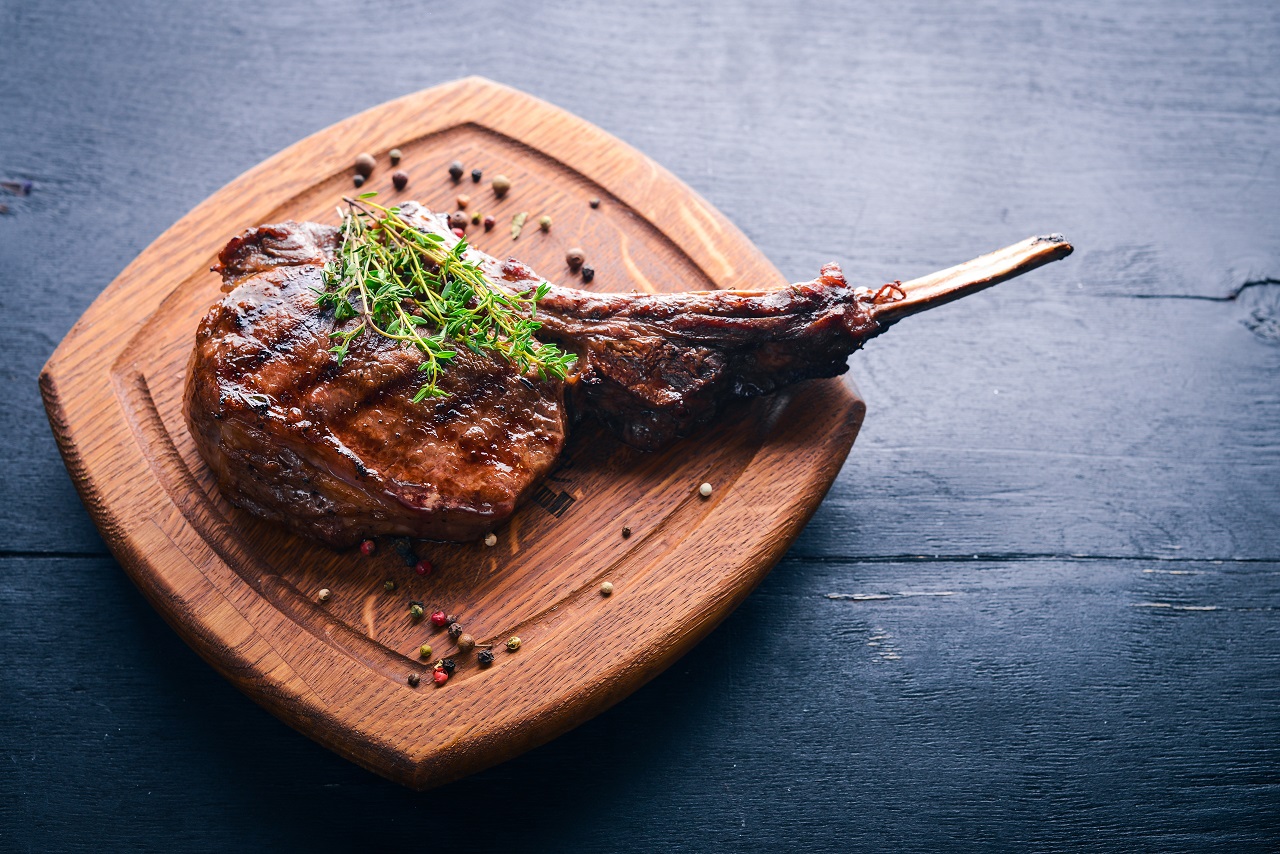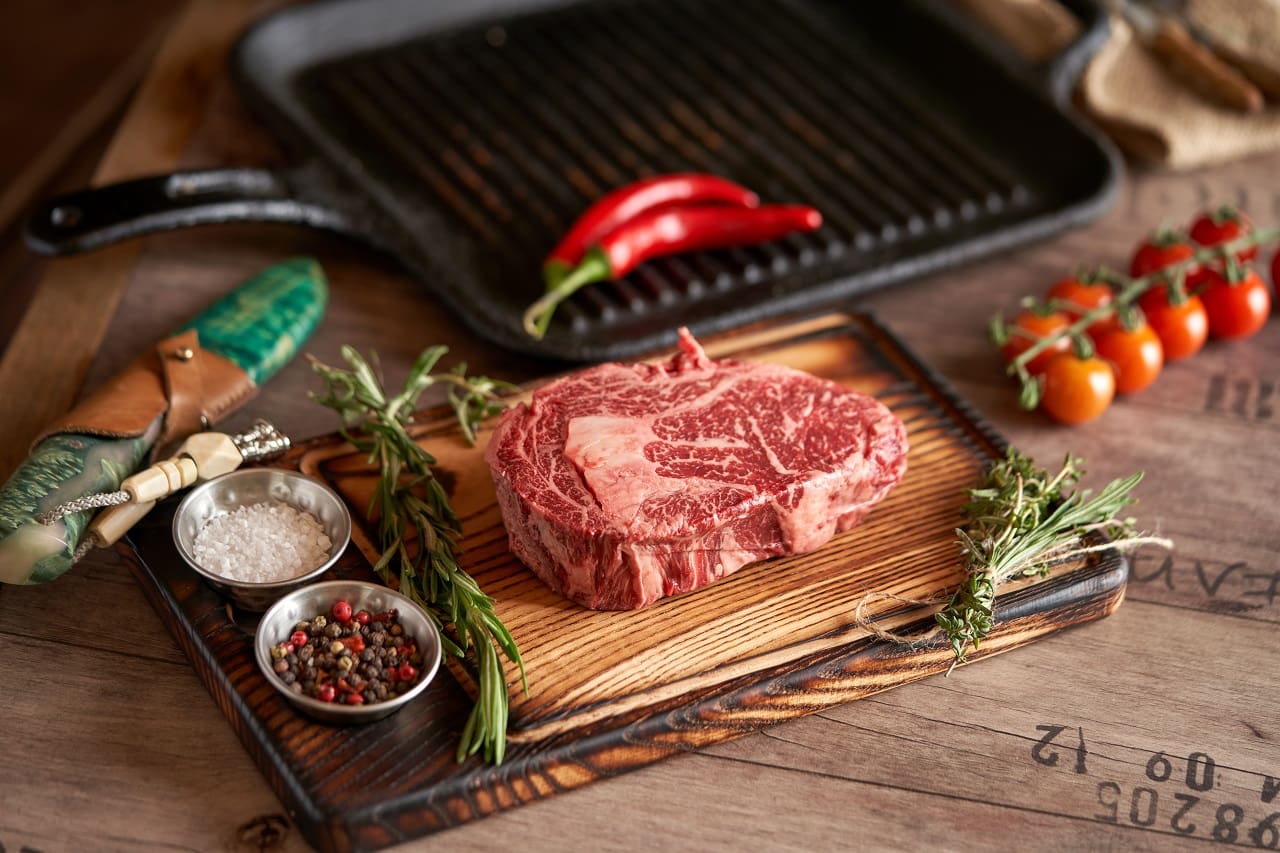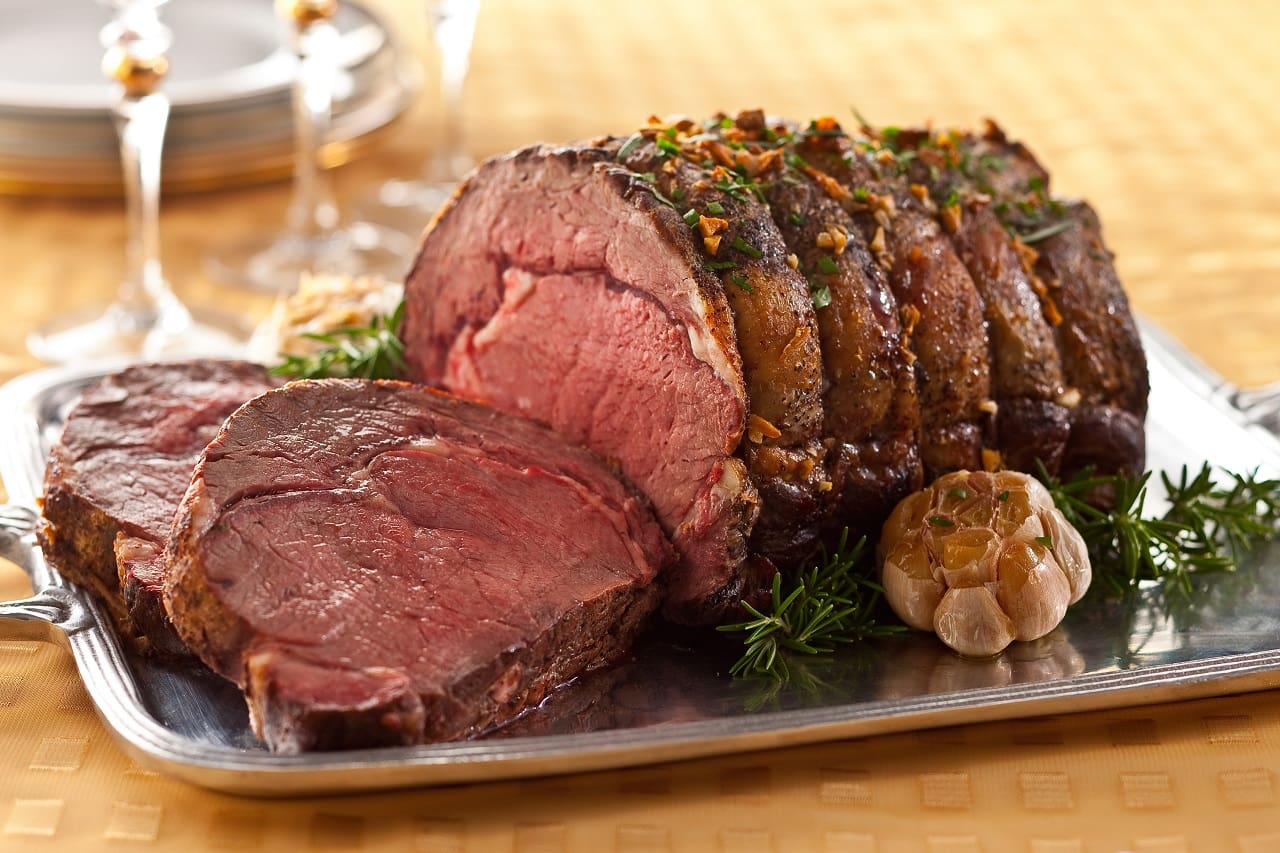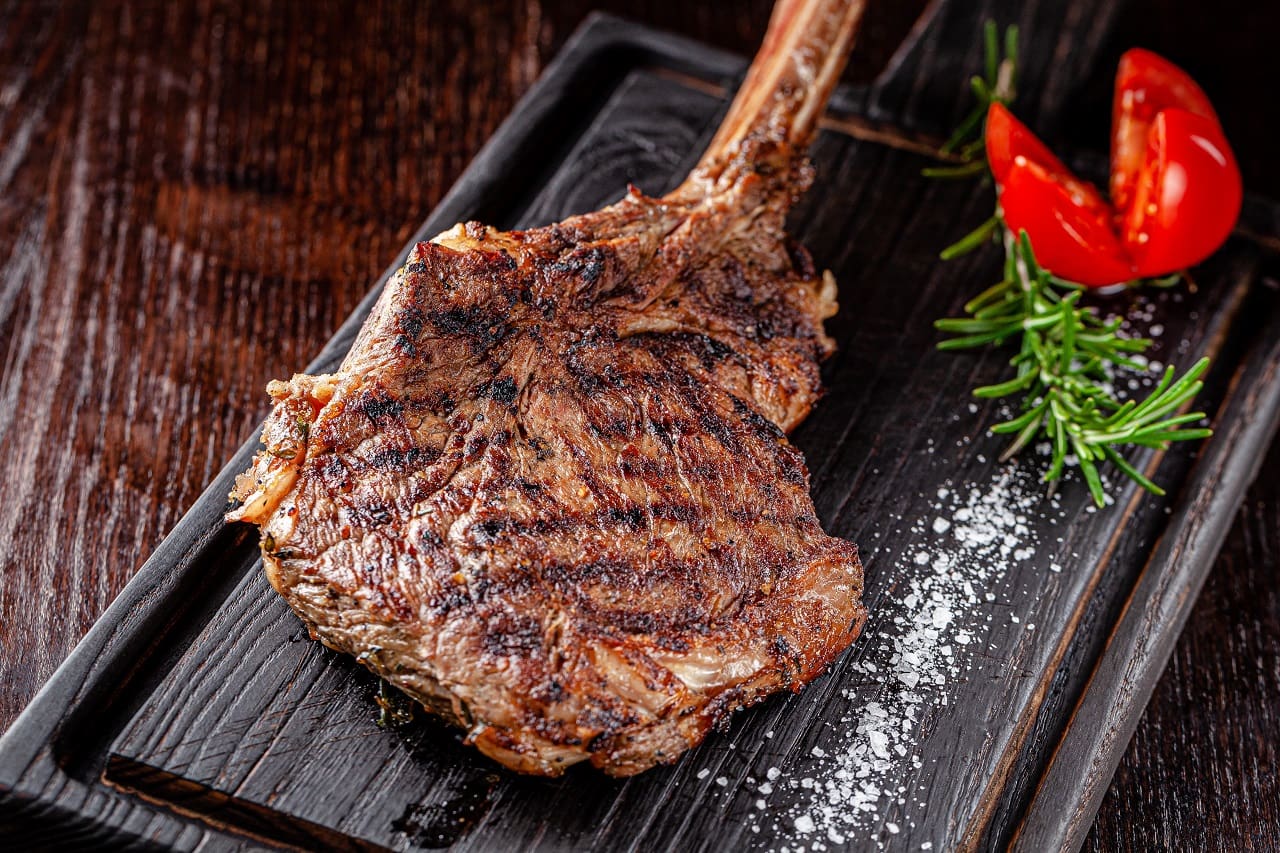
You’ll usually find prime ribs are oven-roasted, but as with all cuts of meat, you can cook it using many alternative methods.
Did you know that using your smoker to cook prime ribs slow and low will create a taste sensation that’s remarkably tender while also imbued with that trademark smokiness.
First thing’s first, what are prime ribs?
I. What is Prime Rib?
A large cut of beef, rib roast is sourced from the primal rib. The qualifier “prime” does not refer to the quality of the meat here, although prime cuts of meat are the notch above choice meat when comparing quality. In this case, “prime” refers to the location of this meat in the primal muscle of the steer.
The whole cut consists of 7 rib bones along with a bunch of marbled and tender muscle. Expect a rib roast to weigh as much as 30 pounds.
If you’re partial to a rare rib eye steak, you’ll find this is sliced from the rib roast.
II. What You Need to Smoke Prime Rib

Make sure you have a smoker large enough to accommodate the rib roast you have in mind.
Consider the biggest rib roasts are more than 16 inches long. You will also need at least a couple of inches on either side of your meat to allow the smoke and heat to efficiently circulate. To make large rib roasts, you’ll need a smoker measuring at least 18 inches across.
Here’s what else you need to get going:
- Aluminum foil
- Thermometer
- Large cutting board
- Knife
- Aluminum pan (disposable)
- Prime rib rub
- Food-safe gloves
- Fuel for your smoker
When you’re smoking prime rib, this requires roughly 20 to 30 minutes for each pound of meat. Variables impacting this include:
- Type of smoker you’re using
- Weather conditions
- Doneness level
In terms of target temperature, shoot for 130F to 150F. The smoking temperature should be dialed in to 250F for best results.
III. Preparation: Fail to Plan, Plan to Fail

You have two main jobs when you’re prepping prime rib:
- Trimming your prime rib
- Seasoning your prime rib
Trimming your prime rib
If you were roasting prime ribs, it pays to leave the thick layer of fat intact. This will help to lock in the moisture.
The goalposts shift when you’re smoking ribs, though. For smoking meat, the aim is to expose the maximum amount of meat to the smoke circulating. If you leave the fat on, this will stop the smoke being efficiently absorbed, and it will also interfere with even heat distribution. Resultantly, only the ends of your meat will be properly smoked.
To avoid this, trim away a good chunk of the fat cap you’ll find on the opposite side to the roast’s bone side.
Seasoning your prime rib
Prime rib doesn’t call for much by the way of seasoning.
Always use plenty of salt. This will enhance the flavor of the meat as well as the smoke.
Beyond this, add some pepper to taste, and feel free to experiment with herb-based rubs for an extra dimension to your rib roast.
Season your meat evenly, paying close attention to the top.
You’ll be cooking at super-low temperatures when you’re smoking ribs, so get things started the right way by allowing the meat to stand at room temperature for up to 3 hours before smoking. Use some plastic wrap to prevent contamination while locking the moisture in.
IV. How to Set Up Your Smoker for Smoking Ribs

As your roast is sitting on the kitchen counter, it’s time to get your smoker into action.
For smaller roasts, a kettle grill can work as a makeshift smoker. We would recommend exploring the best Weber grills, specifically the Original Kettle.
Set the smoker up with 30 minutes per pound of meat in mind. Consider adding another hour for safety’s sake.
Opt for milder wood like cherry. If you use oak or hickory, you risk overpowering the delicate prime rib.
Aim to keep the smoke from light to medium. Avoid heavy smoke as this will generate too much acidity, especially in the fat. You don’t need to add your wood until the roast is ready to fire up.
V. How to Arrange Your Prime Ribs in the Smoker
Pop your rib roast into the smoker, positioned over the drip tray with the bone side facing down.
If you’re using an offset smoker, you should tuck the bone ends well away from the heat.
Add your wood chunks, close the smoker, and crack open a cold one while you wait.
VI. Rotating Your Prime Ribs
Always rotate your ribs midway through smoking.
Use some high-temperature and food-safe gloves when you’re turning the ribs.
Check the water level in the drip pan at the same time. Also, use a reliable meat probe to check the internal temperature of your ribs.
VII. Wrapping your Ribs in Foil
Your rib roast is now almost done. At this stage, you could wrap it in some aluminum foil for the finishing touches in the smoker. This step will impart a rich and smoky flavor to your ribs, but you won’t get the caramelized and crisp surface you would if you skip the foil. The choice is yours.
If you are wrapping your rib roast, wrap it tightly so all the juices are locked inside. Wait until it’s almost done before you remove the meat from the smoker. It will continue cooking for a few minutes when removed.
To achieve a crusty exterior to your prime rib, take the roast out of the oven when it’s 10F below your target temperature. At this stage, shift the roast into a pre-heated oven (400F) or to a grill heated to this temperature. What you will achieve here is the reverse sear method, where the surface of your roast will be wonderfully crisped, while the inside remains tender. All you’ll need is 10 minutes at this high temperature.
VIII. Resting, Carving, and Serving Prime Ribs
When your roast is almost at your desired temperature, remove it and place it on a serving platter. Cover the rib with some aluminum foil and let it rest for 10 minutes or so.
Transfer your prime rib onto a cutting board. Slide a knife right along the edges of the bones to carve them away. You could also cut the bones into small pieces.
Slice the roast to your preferred thickness. With thin slices, these will be more tender, but they’ll also dry out quicker. Thick cuts are tougher, although they will remain moister for longer.
If you follow all these steps and add your own personal touches, you’ll soon be wowing your guests with choice prime rib.
IX. Conclusion
We hope today’s brief guide to smoking prime ribs like a pro has tempted you into giving this choice and tender cut of meat a try.
Before you head off, bookmark Hempen Hill BBQ. We refresh our content daily and we’re here to help everyone, from newcomers to grilling through to more experienced pitmasters. Pop back soon and don’t miss out!
